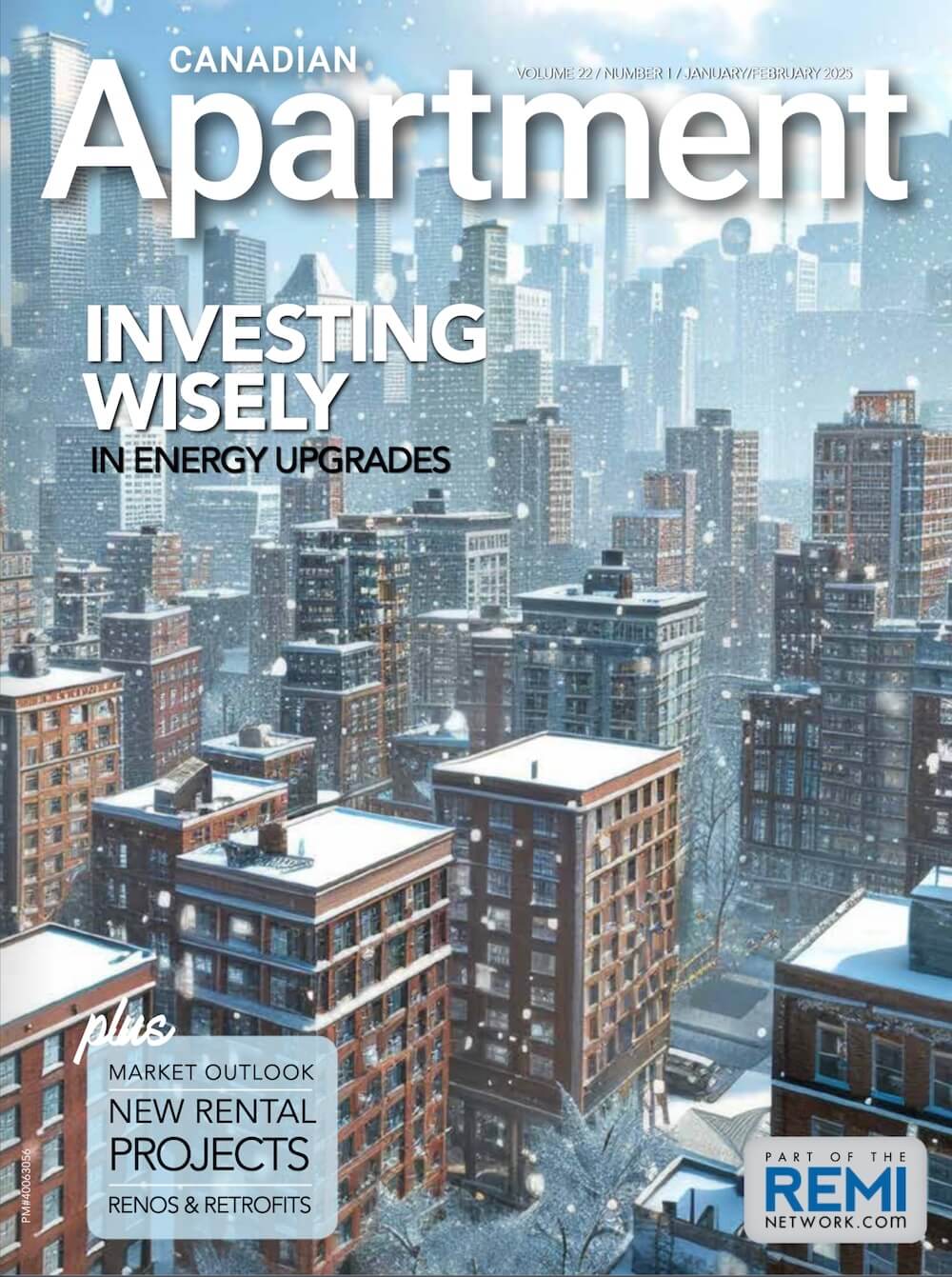More than 800,000 apartment suites in Canada are currently in need of retrofits to meet today’s standards for healthy, comfortable, and resilient rental housing. Yet the Canadian retrofit industry remains nascent. What’s standing in the way of progress?
According to a new Canada Mortgage and Housing Corporation (CMHC) report entitled, Advancing Building Retrofits: Energy Efficient Tower Renewal Implementation Program, the most common barriers limiting deep retrofit uptake in aging residential towers are: risk avoidance by owners; the absence of regulatory requirements to undertake retrofits; fear of an unsatisfactory return on investment, particularly on measures tied to greenhouse gas emission reductions; and the high cost of retrofit design solutions due to a lack of off-the-shelf products.
With these barriers in addition to the pandemic, it’s no surprise progress has stalled. But given Canada’s 2030 GHG emission targets are fast-approaching, and large buildings and construction account for nearly 40 per cent of energy-related greenhouse gas emissions, the urgency to accelerate efforts is dire.
“Advancing the building sector toward deep energy retrofits is a process that requires system-wide movement, including expanding information on strategies, costs and benefits, facilitating financing, supporting industry upskilling and supply chain enhancements and exploring how to address any systemic barriers,” says Duncan Hill, CMHC. “Ultimately our goal should be to move market acceptance beyond the early adopters to include the industry majority by demonstrating what’s possible, overcoming the challenges and sharing data, information and knowledge on successful approaches.”
Essentially, Hill’s statement summurizes findings from a two-year research project CHMC launched (prior to COVID-19) to determine the best path forward. The culminating report, published in November 2021, concludes that significant opportunities and a strategic business case for promoting made-in-Canada, high-performance retrofit products exist, and that several government bodies could play an important role in how the program would unfold. From executing codes and enforcement, to promoting and potentially funding new technologies specific to aging apartment towers, bringing a broader federal focus to homegrown retrofit solutions would benefit the industry, the economy, and our hard-hit communities now recovering from the pressures of the pandemic.
“The research phase is only the beginning,” says Hill. “Future phases of this project will expand on what we’ve learned and bring Canadian-made retrofit solutions and best practices to the forefront.”
Phases will include: further engagement with relevant government groups; creating a solutions framework that identifies specific product categories and partners; working with Canadian and European partners to design and build demonstration unit(s) that address critical gaps in the areas of ventilation, cladding, envelope, and balconies: and establishing a “best practice” forum.
Until then, multi-residential apartment owners currently navigating the tricky path to tower renewal can benefit from an overview of replicable steps, while gaining access to cost-effective, Canadian-made retrofit solutions in areas such as thermal bridging, ventilation systems, and non-combustible building envelopes.
The report also touches on the struggles specific to implementing retrofit projects in occupied apartment buildings. As owners and managers are all too aware, construction projects can be extremely disruptive, leading to unwanted conflict with tenants. To minimize this on-site strife, retrofits in occupied buildings require a different approach that must consider sequencing, communication and maximizing preparation off-site.
“Unhappy tenants can result in delays, cost overruns and a dissatisfied community that can negate project objectives,” the report contends. “Strategies including prefabrication and modular systems, design strategies, installation means and methods that reduce unit entry, tenant engagement and protocols, and contractor anticipation of challenges can help lead to better outcomes and perceptions of success for all parties.”
Industry-wide challenges: skilled worker and supply chain capacity
Meanwhile, as the pandemic continues to create issues on multiple fronts for building owners and developers, there’s more to be done to ensure Canada’s retrofit industry gains momentum. With support from CMHC and other partners, The Delphi Group and the Canada Green Building Council (CaGBC) launched the Canadian Green Retrofit Economy Study to identify ways in which Canada might scale up retrofit efforts across all large building types. The study explores the steps needed to secure workforce and supply chain capacity and ensure that the unprecedented level of investment in aggressive retrofit programs—including the CIB’s $2 billion financing initiative for energy-efficient building retrofits—delivers transformational outcomes.
“To meet Canada’s net-zero emissions ambition, municipalities and their partners are working together to accelerate and retrofit buildings at an unprecedented pace, scale and depth,” says Chris Boivin, Chief Development Officer, Federation of Canadian Municipalities & Managing Director, Green Municipal Fund. “We are pleased to participate in the Canadian Green Retrofit Economy Study because it will help answer crucial questions about how we can work together to create green jobs, low carbon supply chains and broader community benefits.”
Currently underway, this work will expand on research presented in the CaGBC’s 2020 report, “Canada’s Green Building Engine: Market Impact and Opportunities in a Critical Decade” in which it determined that targeted intervention from government and industry will help Canada meet 2030 GHG reduction targets while generating significant economic income to the tune of $150 billion in GDP. It would also create new, highly skilled jobs and make communities more resilient over the long term.
Any way you slice it, 2022 will bring a greater emphasis to large building retrofits and the urgency for widespread retrofit uptake, whether the pandemic dispruptions continue or not. Factoring in “made-in Canada” solutions just makes sense.
Visit Canada Mortgage and Housing Corporation | CMHC (cmhc-schl.gc.ca) for more information.






